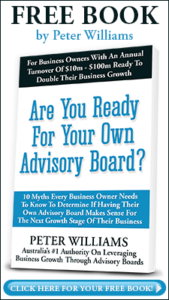Fast food giant McDonald’s was actually founded in the mid-1940s and, by 1958, they’d sold their 100 millionth hamburger—but most people still didn’t know about McDonald’s, even in America. It was in the 1960’s that the company truly saw an exponential explosion in sales.
Technically, McDonald’s is now selling 75 hamburgers per second and has a revenue somewhere around $22,000,000,000 per annum—but McDonald’s actually started out as a very small company.
In 1954, Ray Kroc (the founder of McDonalds of record) visited a small but successful restaurant in California run by the brothers Dick and Mac McDonald. Kroc was stunned by their effectiveness and emphasis on fast service. The McDonald brothers were applying assembly line processes to the restaurant business, which was unheard-of at that time. In 1955, Kroc joined the business, and later patented the MacDonald’s processes, but it would still be many years before McDonald’s was on its way to being the success it turned out to be.
Among the things that made McDonald’s attractive to almost every part of the population was the range of products that they sold, and their strategically appealing directly to those segments. It’s quite an incredible company when you think about it, because they saw the importance of always developing something new.
Take the ‘Happy Meal’, for example. It’s been around for quite a long time. It was introduced in 1979, but for many adults living now, it’s something that’s always been around, that was likely a part of their childhood. Seasonal offerings and cooperative marketing with film companies have also helped them to capture market share.
From an efficiency standpoint, of course anything we can do in business to speed things up is imperative. That’s another key reason McDonald’s became popular to begin with. It’s easy, convenient and everyone seems to love it.
When a business like McDonalds revolutionises an industry, in the long run it helps other business out with systemisation processes. When you look at the recent innovations they’ve had—such as the ability to audit your own food when you first walk in and not annoy the counter staff, you can see that there’s a lot of work and research that’s gone into these kinds of things.
The active systems that big companies like these have implemented with time and motion studies and focus groups ultimately created a company that can be operated by a bunch of 17-year-olds. With the 1.5 million employees McDonald’s has around the world, that means that their staffing costs aren’t that expensive.
In the end, although it has become quite commonplace, it’s the systemisation of processes, continuous innovation and catering to key demographics that’s made McDonald’s what it is today.

